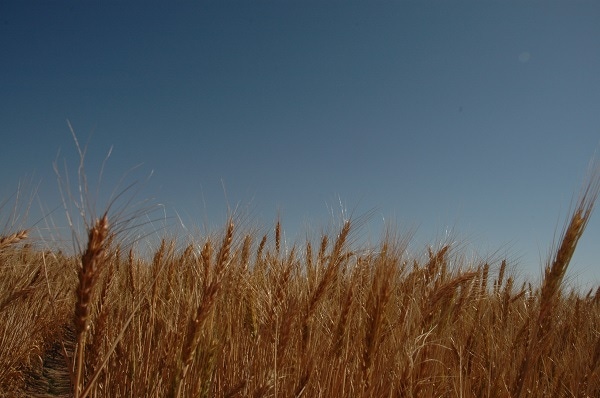
Improving genetic yield potential and raising the yield ceiling already in place are key factors in increasing wheat productivity.
Capitalizing on more cooperation between public and private plant breeding programs also will move wheat yields up, says Oklahoma State University wheat breeder Brett Carver.
Carver, speaking at the recent Red River Crops Conference in Altus, Okla., said wheat breeding “needs private industry investment. In 2008, few players were involved in wheat breeding. Today, the landscape has changed and new players are coming in.” He cited Bayer CropSciences as already in with Dow and Pioneer, among several other companies, looking to become involved in wheat breeding.
Carver said public breeding “is holding its own” in the current environment that includes more private entities. “And the lines between public and private are being blurred. Varieties developed by public wheat breeding programs are licensed to private companies.”
He said wheat yields have shown an upward trend since 1980, about one-half bushel per acre per year over that period. That improvement compares well with soybeans but lags far behind rice. “Rice has made significant improvements and without genetically modified varieties. Wheat needs to emulate that.”
If you are interested in more information about wheat production and marketing, please check out Southwest Farm Press Daily and receive the latest news right to your inbox.
Raising the yield ceiling is one factor. He said wheat genetics currently available are not producing to capacity. Environmental and management factors hinder productivity.
“Also, too often we focus breeding resources on what we’re losing to pests and pathogens instead of concentrating on increased productivity. About 30 percent of our research is devoted to protecting yield.”
Wheat markets respond to world supply.
He said studies evaluating intensive wheat management programs have shown that, with adequate moisture, wheat does respond to inputs and management. “We need to optimize the union of genetics and management,” he said. “We know what the yield limiting factors are and we need to control those in a way that is cost effective.” Intensive wheat management trials, he added, have shown a 20 bushel per acre advantage.
But to reach peak productivity, some plant improvements are needed. “I don’t think we have wheat with straw strength to support 100-bushel wheat,” Carver said. “We need to focus on that.”
Crop rotation should be part of a wheat management program to improve yield, he said.
Raising the genetic potential of wheat is also part of the overall research goal but one that typically takes more time. “We need to accomplish more in less time,” Carver said. “Now, a plant to a progeny cross requires six to ten years, and it’s usually closer to ten.”
Different techniques may shorten that interval considerably. Converting a haploid to a double diploid is one option. “We can do that in a year,” Carver said. “The limiting factor is cost.” Making one such cross costs about $30, he said, but in a robust breeding program he would make thousands of those per year. He also said the limited genetics would reduce the number of combinations possible with more typical crosses.
Hybrids are also part of the effort and can reduce the cycle to closer to six years. “But production of seed does not confirm heterosis,” Carver said.
Increased efficiency
Basically, he wants more gain per breeding cycle to speed up the process from plant to commercialized variety. “We want a bigger program and more varieties with heritable traits.”
The program at OSU has come a long way. “The wheat breeding program is now three times bigger than it was in the 1990s,” he said.
Breeders are looking at multiple factors including, phenomics, genomics and reverse genetics—going back to rye segments to find materials.
“We want to learn how to add genes that are already available instead of looking for new ones.” Carver said transgenic wheat currently faces an acceptance problem but cisgenics, in which genes are transferred from a closely-related organism, may have a place.
He said breeders need to look at multiple options, including gene transfer, double haploids, marker assisted selection and reverse genetics to improve wheat yield potential. Hybrids also should play a role.
He said wheat faces some serious threats, including wheat blast, a disease found in Brazil in 1985 and more recently in Kentucky.
A potential shortage of phosphorus also poses a serious threat. “Reserves are near exhausted. We have a five-year known supply and 16 percent of phosphorus use is for wheat. We need to increase the resource efficiency.”
He said stem rust is another potential problem. “We have the genetics in place but forms of the disease in other parts of the world could have an effect on our varieties. We need multiple genes for resistance.”
Carver said wheat is capable of producing more than the 35-bushel per acre average in Oklahoma. Part of the solution to better yields will be better management and part will be a sharper focus on breeding from public and private companies.
A little more rain would also help.
Also of interest:
Bee research sheds new light on faltering colonies
About the Author(s)
You May Also Like






